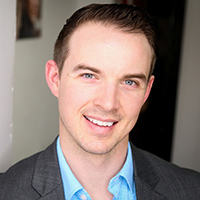A Forgotten First Step in Wealth Creation: Emergency Funds
Putting aside money for a rainy day (and it WILL rain one day, don't kid yourself) can pay off in many ways, including lowering your stress.


An epidemic of stress grips America. Despite a low unemployment rate, 62% of Americans admit to feeling stressed about money with 31% feeling stressed by it all the time and losing sleep, according to a survey by investing app Stash.
In the short term, that level of stress can cause health problems, reduce enjoyment of life, strain relationships and reduce productivity at work. Over the long term, many people’s fears of falling too far behind may come true if there is a decline in the economy, a health problem or a temporary income loss. Without adequate funds to weather those storms, vital bills go unpaid and assets are depleted.
This fear has a basis: 40% of American households have less than $400 in emergency savings, and more than half have less than $1,000. Very few have the recommended three to six months’ worth of expenses in a savings or money-market account.
From just $107.88 $24.99 for Kiplinger Personal Finance
Become a smarter, better informed investor. Subscribe from just $107.88 $24.99, plus get up to 4 Special Issues

Sign up for Kiplinger’s Free Newsletters
Profit and prosper with the best of expert advice on investing, taxes, retirement, personal finance and more - straight to your e-mail.
Profit and prosper with the best of expert advice - straight to your e-mail.
We can rarely predict when an emergency will happen, but we can be 100% certain that an unanticipated financial hit will strike eventually. Emergency funds are for the expenses we know we will incur at some time; we just don't know when. Expenses such as medical bills, car repairs, home repairs and other inevitable happenings necessitate keeping cash on hand. The adage of pay yourself first applies. For many, emergency funds serve as a first and integral step in financial planning.
Below are the basics to establishing, maintaining and utilizing an emergency fund.
How much?
The first step in determining an emergency fund goal is to calculate what expenses must always be maintained. For example, rent, food, utilities, gas, insurance and car payments can't be delayed. They must go into the calculation of monthly nondiscretionary expenses. Money toward a luxury vacation or other discretionary expenses can be excluded, because you can cut them.
Experts recommend three to six months of nondiscretionary expenses in reserve, at a minimum. Circumstances such as a serious health condition or an upcoming mass layoff in your industry, may necessitate even more.
It’s recommended that single-income families keep at least six months’ worth of expenses 100% safe in a money market or savings account. If your total monthly expenses are $1,000, then $6,000 is suggested for your emergency fund.
Dual-income households may opt to go as low as three months and put additional savings into low-risk investments that generate returns that beat inflation, provided that both incomes are steady and stable. That can serve as the start of an investment pyramid, which is formed by first creating a base of safer investments and then placing smaller amounts of money in more volatile assets.
Having cash on hand allows you to pay for unexpected expenses without having to take out risky 401(k) loans, sell equities or take out a home equity loan. All of which can have a devastating effect on net worth. For a wealth-accumulation plan to succeed, it’s important to be able to handle contingencies without selling assets or taking on debt.
How to Save
So few Americans have adequate emergency savings for several reasons, including high living expenses in urban areas, relatively low pay in rural areas, a lack of job security and failure to create an effective financial plan. Although people have limited control over economic conditions, they can control and create an effective spending and savings plan.
The spending plan should find ways to combat relatively high living costs and economize. When spending is planned, it's then possible to create a realistic, disciplined savings plan. Most people can work their monthly budgets to increase savings. Even if you have to start small, the important thing is to just start.
For example, if you can save $250 per month with careful spending, that's $3,000 in just one year. To make sure you hit the $3,000 goal, consider setting up an automatic contribution from your paycheck.
Where to Hold
Emergency funds must be immediately available and 100% safe. Until you have enough to cover emergencies such as car repairs, medical bills or income declines, savings should go directly into a savings or money market account. Online banks and money-market accounts provide much better interest rates, which can be applied toward your savings goal.
The primary goal of a savings account is to provide a higher rate of return than if you just locked cash up in a safety deposit box. Online banks offer interest rates that are often above what brick-and-mortar banks pay. Money-market funds also tend to pay higher interest rates than savings accounts.
Many of those accounts have restrictions, including limiting withdrawals to six per month. Because disbursements from emergency fund accounts are meant to be occasional, those restrictions shouldn’t matter. For example, if temporarily unemployed, you can transfer the money needed for the next month's expenses to your checking account with one transaction.
When to Use
The goal of an emergency fund should be to prevent indebtedness and protect assets.
Emergency funds should be built with the expectation to actually use the money in the future. Often, people make the mistake of charging emergency expenses to a credit card and keeping money in the bank. This can create a false sense of security. Because credit card interest rates are vastly higher than any savings account rates, carrying a credit card balance will leave you worse off than if you were to just draw on savings. Remember, you still have the open credit line should it be needed later.
Creating an emergency fund provides the best antidote to the epidemic of financial stress. Knowing those inevitable financial hits are covered allows people to relax and focus on more productive things than financial anxiety. Since emergency funds cover contingencies, they allow investors to increase their money without fear of having to sell assets when the market is disadvantaged.
By building an emergency fund, you take the first step in a longer-term wealth-creation plan. Once you have sufficient savings to navigate life's curveballs, you're ready to enact a comprehensive wealth-creation plan involving diverse investment options.
This information is for general purposes only. This information is not intended to be a substitute for specific professional financial advice. Please consult a financial professional in regards to your own individual situation. Advisory Services and Financial Planning offered through Vicus Capital, Inc., a Federally Registered Investment Advisor. Registered Representative offering securities through Cetera Advisor Networks LLC, member FINRA/SIPC. Cetera is under separate ownership from any other named entity.
Profit and prosper with the best of Kiplinger's advice on investing, taxes, retirement, personal finance and much more. Delivered daily. Enter your email in the box and click Sign Me Up.

Chad Chubb is a Certified Financial Planner™, Certified Student Loan Professional™ and the founder of WealthKeel LLC. He works alongside Gen X & Gen Y physicians to help them navigate the complexities of everyday life by crafting streamlined financial plans that are agile for his clients' evolving needs. He helps them utilize their wealth to free up time and energy to focus on their family, their practice and what they love most.
-
 Holiday Tax Scams: 'Tis the Season to be Wary
Holiday Tax Scams: 'Tis the Season to be WaryTax Scams Navigating tax tricks of the holiday season may be daunting, but don't let that destroy your festive spirit
-
 Metro by T-Mobile Is Giving Away This Samsung Galaxy A16: Which Plans Are Eligible?
Metro by T-Mobile Is Giving Away This Samsung Galaxy A16: Which Plans Are Eligible?Metro by T-Mobile is offering free Samsung Galaxy A16 phones on eligible plans right now. Here’s how the deal works.
-
 I Drive and Collect Classic Cars: Here’s How I Got Started
I Drive and Collect Classic Cars: Here’s How I Got StartedAre classic cars a hobby or an investment strategy — or both? Either way, the vintage car scene is much cooler and more affordable than you think.
-
 The $183,000 RMD Shock: Why Roth Conversions in Your 70s Can Be Risky
The $183,000 RMD Shock: Why Roth Conversions in Your 70s Can Be RiskyConverting retirement funds to a Roth is a smart strategy for many, but the older you are, the less time you have to recover the tax bite from the conversion.
-
 A Financial Pro Breaks Retirement Planning Into 5 Manageable Pieces
A Financial Pro Breaks Retirement Planning Into 5 Manageable PiecesThis retirement plan focuses on five key areas — income generation, tax management, asset withdrawals, planning for big expenses and health care, and legacy.
-
 4 Financial To-Dos to Finish 2025 Strong and Start 2026 on Solid Ground
4 Financial To-Dos to Finish 2025 Strong and Start 2026 on Solid GroundDon't overlook these important year-end check-ins. Missed opportunities and avoidable mistakes could end up costing you if you're not paying attention.
-
 Are You Putting Yourself Last? The Cost Could Be Your Retirement Security
Are You Putting Yourself Last? The Cost Could Be Your Retirement SecurityIf you're part of the sandwich generation, it's critical that you don't let the needs of your aging parents come at the expense of your future.
-
 I'm an Insurance Pro: It's Time to Prepare for Natural Disasters Like They Could Happen to You
I'm an Insurance Pro: It's Time to Prepare for Natural Disasters Like They Could Happen to YouYou can no longer have the mindset that "that won't happen here." Because it absolutely could. As we head into 2026, consider making a disaster plan.
-
 The Future of Philanthropy Is Female: How Women Will Lead a New Era in Charitable Giving
The Future of Philanthropy Is Female: How Women Will Lead a New Era in Charitable GivingWomen will soon be in charge of trillions in charitable capital, through divorce, inheritance and their own investments. Here's how to use your share for good.
-
 5 Smart Things to Do With Your Year-End Bonus, From a Financial Professional
5 Smart Things to Do With Your Year-End Bonus, From a Financial ProfessionalAfter you indulge your urge to splurge on a treat, consider doing adult things with the extra cash, like paying down debt, but also setting up a "fun fund."
-
 Are You a Gen X Investor? Here's How You Can Protect Your Portfolio From an AI Bubble
Are You a Gen X Investor? Here's How You Can Protect Your Portfolio From an AI BubbleAmid talk of an AI bubble, what's the best course of action for investors in their 50s and 60s, whose retirement savings are at risk from major market declines?